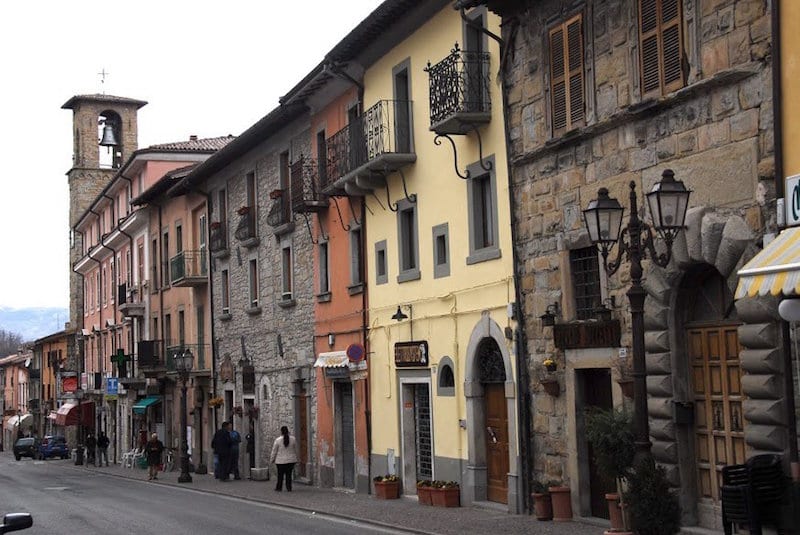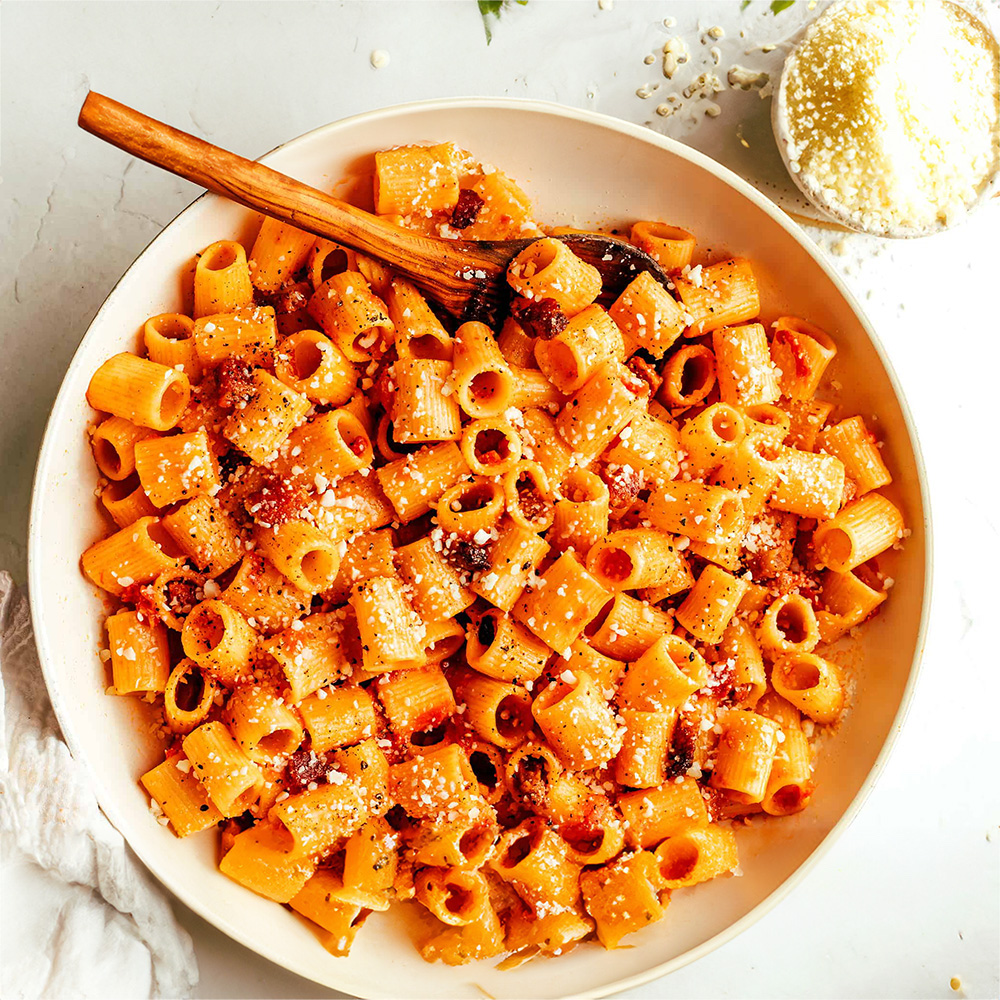A simple pasta from the town of Amatrice in Italy, Pasta all’Amatriciana is a recipe that should be mastered and enjoyed.
Before the earthquake of August 2016, Amatrice was one of the most beautiful towns in Italy. One of those places that the guidebooks recommend to visit at least once in your lifetime. A gem in a thousand meters of altitude, in the heart of the Apennines, rich in monuments, where the air is always cool, even in summer, and the food is genuine.

Like all regions of central Italy, it has agriculture, pastoralism and tourism as the main livelihood resources. In summer, the country tripled its inhabitants with tourists. In winter, also because of the very cold weather, it was inhabited mainly by locals who gathered in homes or trattorias where it was possible to taste excellent local dishes, including the inevitable Amatriciana pasta. This dish comes from the cucina povera (poor cuisine) which features almost all Italian cuisine, especially that of the center and south. As for the Cacio e Pepe Pasta Cheese, Amatriciana also is native of the Lazio region. The ingredients of the original recipe are: guanciale (Italian cured pork cheek or jow), cheese and tomato (the latter introduced by the seventeenth century onwards).
The first written record of this dish is from chef Francesco Leonardi who served Amatriciana at a banquet at the Quirinal Palace (Quirinal Palace is the official residence of the President of the Italian Republic) in honor of Emperor Francis I of Austria, organized by Pope Pius VII in 1816.
Leonardi was the author of a cooking encyclopedia in seven volumes, ‘The Modern Apicius’ or the art of preparing every kind of food. It is a list of 3000 recipes with stories and tips. He was the first chef to frequently use the tomatoes and to transform ‘Gricia pasta’ in the most famous ‘Amatrice’. His version includes macaroni, Amatrice guanciale, tomatoes, onion and pecorino.
Since then and until the beginning of ‘900, the popularity of this dish became undisputed in Rome, and many hosts took the nickname Matriciani to indicate the profession.
About the original recipe:
True amatriciana has neither onion, or garlic. Guanciale is used and not bacon. In Amatrice, the recipe is made with maccheroni and in Rome it is made with bucatini pasta shape.
Of course, a so well known and loved dish, owes its success to the quality of the ingredients. In the traditional recipe is the guanciale, strictly Italian (available in the best international Italian food shops), the key ingredient that gives the unique taste of a simple dish but for this very difficult to imitate. Pecorino Romano cheese (and not Parmigiano) is the other fundamental element that enhances the rest of the ingredients.
In Italy, meatless versions of this dish are often served in vegetarian restaurants and seitan is the main ingredient. A good quality of seitan makes delicious the Amatriciana vegetarian recipe. However, in this case, it needs (but it is personal taste) the addition of onion to give even more flavor and character to the veggie dish.

Pasta all’Amatriciana Recipe
- Total Time: 25 minutes
- Yield: 2 servings 1x
Description
A simple pasta from the Amatrice town of Italy, Amatrician is a recipe that should be learned and enjoyed.
Ingredients
- 1 chopped onion
- 4 tbsp extra virgin olive oil
- 300 g 11 oz tomato pulp (from cherry or San Marzano tomatoes)
- Pinch of sea salt
- 150 g 5 oz seitan, cut into cubes
- 160 g 3 oz maccheroni or bucatini pasta (I choose whole wheat mezzi maccheroni pasta)
- 2 tbsp grated Pecorino romano
Instructions
- Brown the onion in extra virgin olive oil (2 tbsp). Remove it and cook the tomato pulp until the sauce is smooth (about 15 minutes).
- In a non stick pan cook the seitan for five minutes. Add it to tomato sauce and stir over low heat for 3-5 minutes. When the tomato is cooked, add 1 tbsp extra virgin olive oil and salt.
- Cook the pasta, al dente, in boiling salted water.
- Drain and season with the sauce. Add the grated pecorino.
- Prep Time: 15 mins
- Cook Time: 10 mins
- Category: Main
- Method: Pasta Making
- Cuisine: Italian













im making this dish for my history class for 9th grade
Love this dish.